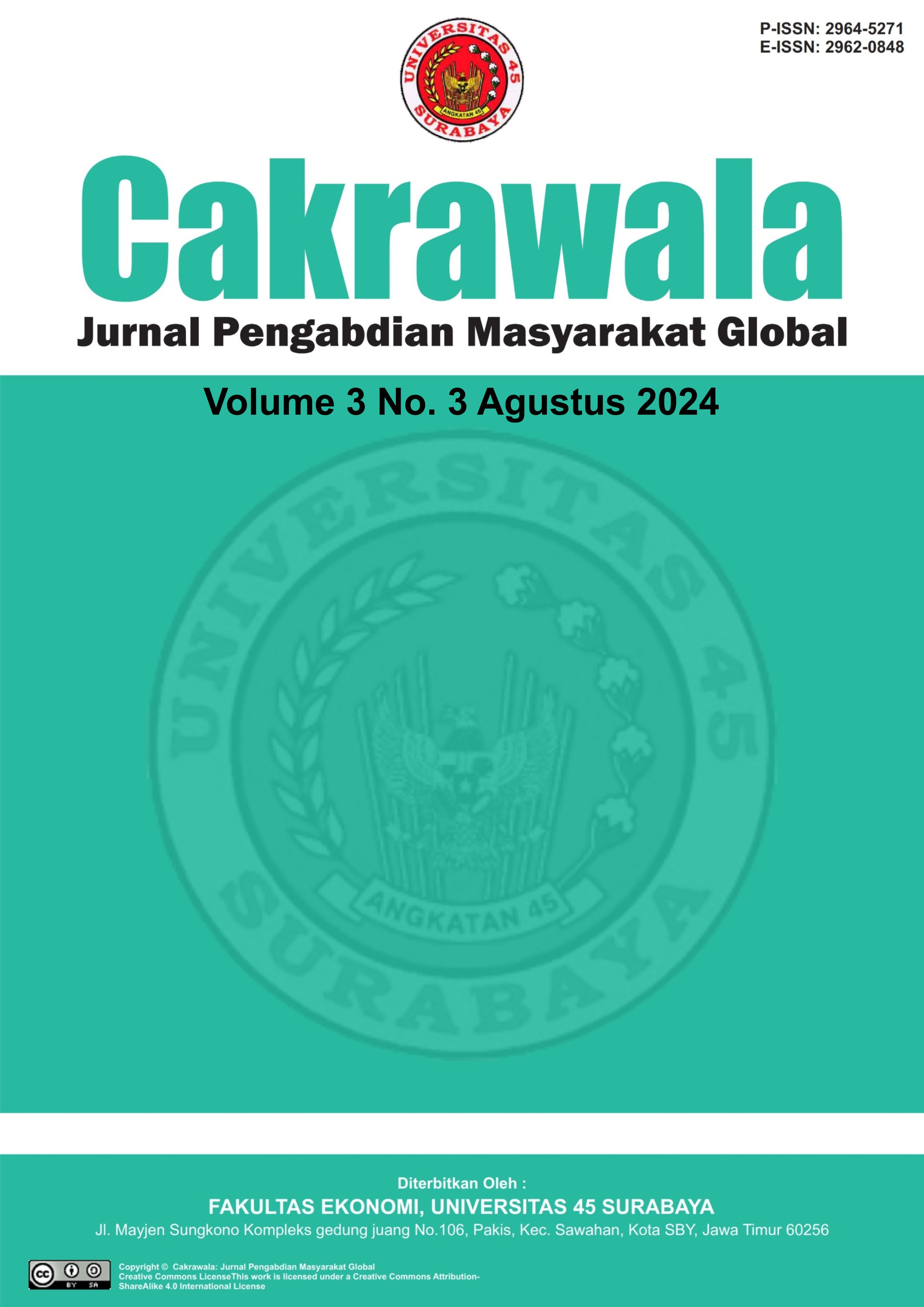Pemberdayaan Petani Padi Sawah dalam Meningkatan Efisiensi Usaha Tani dengan Pembuatan dan Aplikasi Herbisida Organik di Desa Botolempangan Kabupaten Maros
DOI:
https://doi.org/10.30640/cakrawala.v3i3.3146Keywords:
Paddy, Rice farmer, Organic-Herbicide, Farming BusinessAbstract
Botolempangan Village in Bontoa Sub-district is one of the centers of paddy rice production in Maros Regency, with characteristics of rain-fed paddy fields that have many obstacles to weed infestation, especially if the dry season is abandoned from rice farming activities, before being planted during the rainy season where farmers are very dependent on the use of herbicides. Dependence on the use of synthetic (inorganic) herbicides occurs from the pre-growth period of seeds, seedlings to the maintenance process. High costs result in considerable inefficiencies in rice farming. Training in technology transfer efforts to make Organic Herbicide Formulations, and their applications are carried out to increase the Empowerment and Efficiency of rice farming on Rainfed Rice Fields. With the efficiency target is to increase the profit of paddy rice farming, minimizing inorganic herbicide inputs. The output of this activity ultimately produces products that can be applied to at least reduce or reduce the use of inorganic herbicides. At the end of the activity, farmer business groups are able to produce and apply Organic Herbicide Formulations on Demoplots on Farmer-Owned Land.
References
Anwar, R., Suzanna, E., & Triyono, L. (2014). Pengaruh dosis air kelapa fermentasi terhadap pertumbuhan alang-alang (Imperata cylindrica L). Jurnal Agriculture, X, 1076–1082.
Badan Pusat Statistik. (2023). Kecamatan Bontoa dalam angka 2022. BPS Kabupaten Maros.
Frastika, D., Pitopang, R., & Suwastika, I. N. (2017). Uji efektivitas ekstrak daun kirinyuh (Chromolaena odorata (L.) RM King dan H. Rob) sebagai herbisida alami terhadap perkecambahan biji kacang hijau (Vigna radiata (L.) R. Wilczek) dan biji karuilei (Mimosa invisa Mart. ex Colla). Natural Science: Journal of Science and Technology, 6(3).
Kholis, A. S., Kusumasari, R., Saputra, C. D. F., & Sumarmi, S. (2022). Pemanfaatan bahan-bahan organik sebagai herbisida pembasmi gulma untuk menekan biaya produktivitas. Jurnal Pengabdian Masyarakat IPTEKS, 8(1), 46–60.
Murtilaksono, A., Adiwena, M., Rahmadhani, E., Zhafira, D. N., Subianti, A. Y., Fatmawati, F., & Sari, N. K. (2024). Penerapan teknologi formulasi herbisida nabati berbahan gulma lokal di kelompok tani Bina Warga untuk mendukung ketahanan pangan di Kota Tarakan: Application of vegetable herbicide formulation technology made from local weeds in community development farmer groups to support food security in Tarakan City. PengabdianMu: Jurnal Ilmiah Pengabdian kepada Masyarakat, 9(3), 463–474.
Sadat, M. A., Arifin, A., Azisah, P., & Pata, A. A. (2023). Profitabilitas dan kelayakan usahatani padi sawah tadah hujan Kabupaten Maros. Jurnal Ilmiah Agroinfo Galuh, 10(1), 547–558.
Tulak, T., Situru, R. S., & Batatta, Z. (2023). Pemanfaatan cuka aren sebagai herbisida alami untuk membasmi gulma. Dinamisia: Jurnal Pengabdian Kepada Masyarakat, 7(4), 998–1003.
Downloads
Published
How to Cite
Issue
Section
License
Copyright (c) 2024 Sri Muliani, Henny Poerwanty, Muhammad Kadir, Nildayanti Nildayanti, Andriani Andriani

This work is licensed under a Creative Commons Attribution-ShareAlike 4.0 International License.








